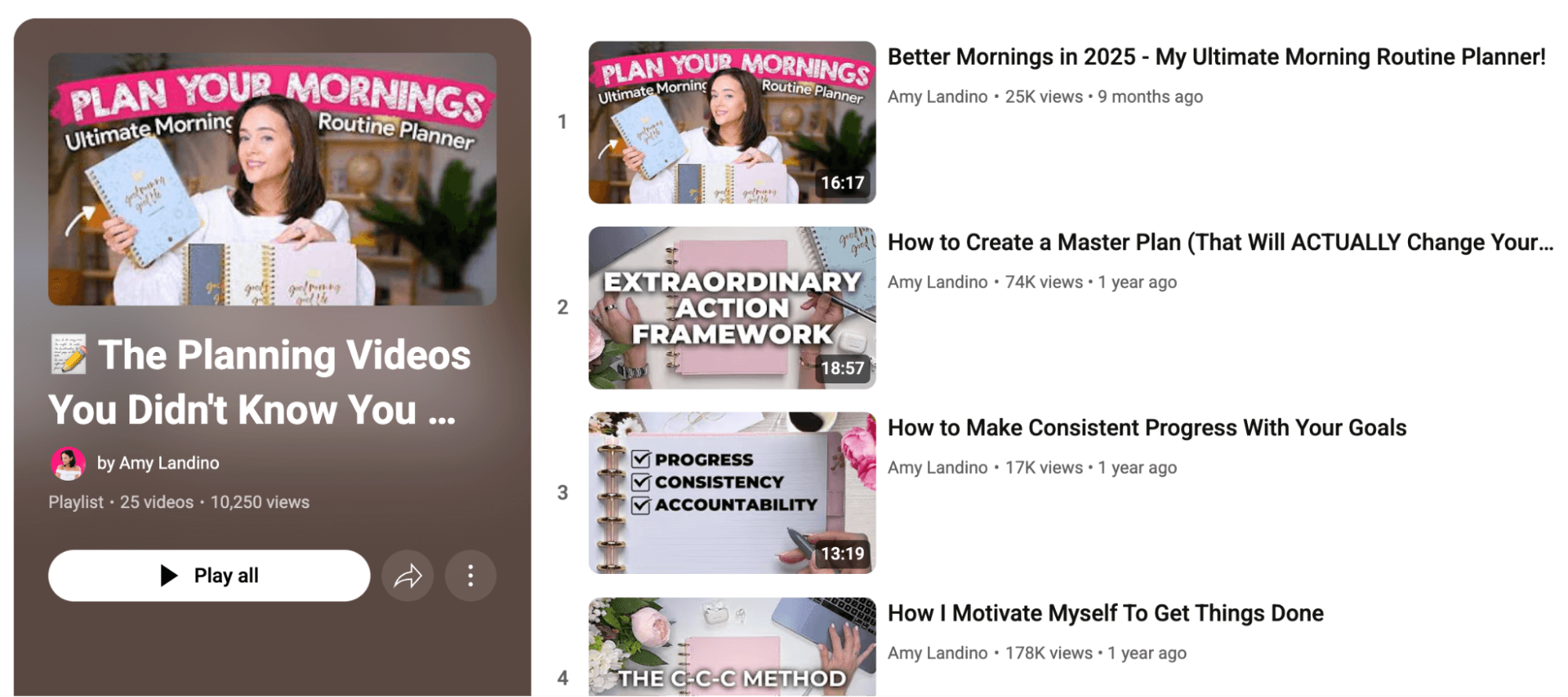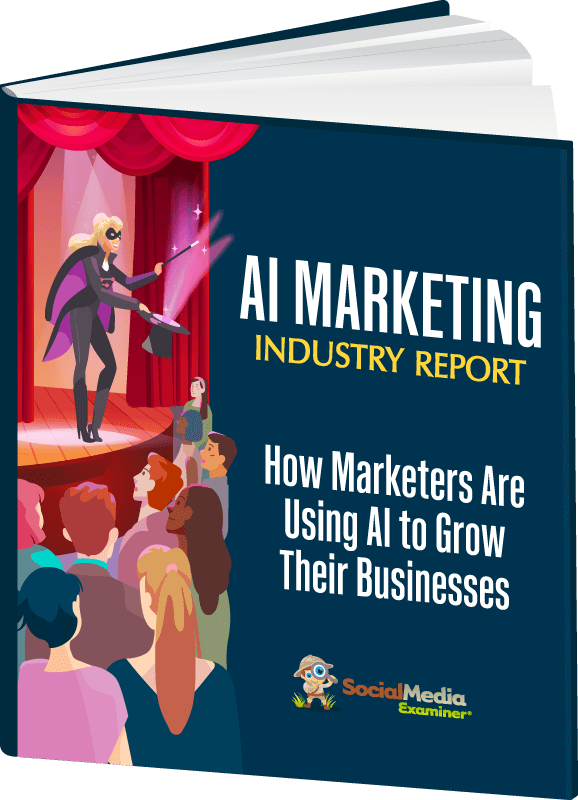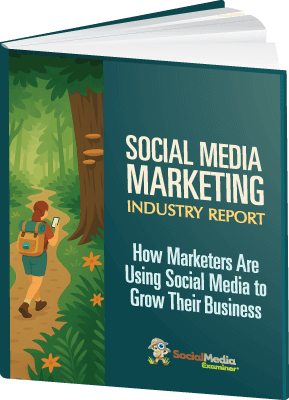Are you putting in hours of work creating content, but your client list still depends almost entirely on word-of-mouth referrals? Do you wish you could leverage the power of long-form video to become the undisputed authority in your niche without the overwhelming pressure of going viral?
In this article, you will discover how to use the Four P's framework to turn your expertise into engaging YouTube content that attracts a stream of highly qualified clients.
Why YouTube is Best for Positioning You as an Authority
YouTube is an indispensable platform for establishing thought leadership, offering something no other platform can match.
As Amy Landino explains, while Facebook and LinkedIn have attempted to compete, nothing matches YouTube's ability to host videos of any length exactly as you want them. You don't need to chase virality or hit certain algorithm triggers. YouTube provides a video database where people can get to know you better, understand your methods, see your tutorials, and comprehend what you have to offer.
The distinction between YouTube and other platforms becomes clear when you consider how audiences perceive creators differently. There's a significant difference between someone saying they follow you on YouTube versus following you on TikTok or Instagram. On TikTok, they might recognize your face when you show up in their feed. On Instagram, they might know what you're known for. But with YouTube, people follow you by name. They know you by name, and that name recognition translates into genuine thought leadership.
YouTube's longevity adds another dimension to its value.
Amy shares how her simple tutorial on embedding YouTube videos into PowerPoint presentations, filmed in 2011 during her first six months of creating content, became her most successful video for years.

It continuously appeared in search results and generated views long after its creation. While older videos may not maintain quite the same relevance today due to the volume of new content being published, the principle remains: YouTube content has staying power that other platforms simply cannot match.
The 4 Ps Framework
Amy Landino's approach to establishing thought leadership on YouTube centers on understanding that every piece of content needs to solve real problems while delivering on clear promises. Her YouTube channel has grown from 80,000 to over 400,000 subscribers by following these principles, though the journey included significant challenges, including rebuilding her business after the pandemic while raising two young children.
The path to thought leadership on YouTube isn't about creating viral content or chasing algorithm changes. It's about consistently showing up for your perfect viewer, solving their real problems, and making clear promises you can fulfill. When you combine this approach with YouTube's unique ability to host long-form content that remains discoverable for years, you create a powerful platform for establishing yourself as a genuine authority in your field. The cake might contain broccoli, but when you present it correctly, your audience will eagerly consume every bite.
Before you begin creating content for YouTube, you need to fundamentally shift how you think about your audience. The biggest mistake people make is looking at the camera lens as just a camera lens. This creates a dangerous mindset where you're either talking to no one, which isn't helpful, or imagining you're talking to millions of people, which is paralyzing. As Amy explains, if you go into video creation thinking about talking to a million people, you'll be deer in the headlights with bulging eyes, tripping over your words.
The solution is to identify your perfect viewer and talk to them as if you're sitting down for coffee with someone who wants your advice. You need to know who your target client is, who needs your help, and who the former version of you is that you can help. When you look at the lens like it's that specific person, it becomes like sitting down for coffee with somebody who just wanted to ask your advice. That's all this is, whether it's long-form or short-form content.
Amy has always called her perfect viewer Charlotte. Charlotte has evolved over the years, moving from someone interested in social media marketing to someone who's now an entrepreneur. Currently, Charlotte is treating her business too much like a job. She's happy she doesn't have to be at her old job anymore, but now she needs to make her business more efficient so she can make more money. She needs to overcome the imposter syndrome that's kept her prices the same for ten years.
Amy knows Charlotte intimately. She knows what Charlotte thinks about, what her struggles are tomorrow, the bills she has to pay, and the team she needs to hire. This deep understanding transforms how Amy approaches the camera. Whether she's talking about morning routines, productivity, or business tips that will make Charlotte's month easier, having this specific person in mind makes communication easier and more effective.
Ready to Supercharge Your Marketing Strategy?

Get expert training and an unbeatable conference experience when you attend Social Media Marketing World—from your friends at Social Media Examiner.
Broaden your reach, skyrocket your engagement, and grow your sales. Become the marketing hero your company or clients need!
🔥 Save $900 on an All-Access ticket. Sale Ends Friday! 🔥
GET THE DETAILSYour perfect viewer will evolve as you evolve. As Amy notes, Beyoncé's perfect listener at the beginning evolved as her audience grew up with her, and the content changed accordingly. That evolution is perfectly fine. You can help one person today by sitting down and talking to the lens of the camera like it's them. If you do that, you'll be ahead of so many people.
#1: Identify the Problem You're Solving
The first P in Amy's framework is the problem you're solving for your viewer. Even comedians are solving a problem with their content – they're figuring out where to hit viewers in the right place at the right moment. For thought leaders, understanding the problem means knowing what your perfect viewer already knows and what they don't know.
Amy explains that we tend to talk about things we've learned in business very quickly, often speaking as if our audience has already been in our brain and went through the whole journey with us. But they haven't. They're in a previous state, and you need to remember what that state looks like. You need to understand where your viewer is now – their current state – and what problem you're solving for them.
The key is using the words your viewer would use to describe their problem. If you ever struggle with what to title your content or what to say to make people want to watch, use the words your viewers would be using. That's how you figure out what the problem is – it's the current state, where they are now.
Amy uses the metaphor of broccoli in the cake to explain how to present problems effectively. In business, we've learned so much that we want to shake our clients and tell them exactly what they're doing wrong – that's the broccoli. Nobody wants to hear they're the problem, that they need to change their approach, or that they need a new strategy. That message falls on deaf ears.
But if you present a nice big piece of cake – something that promises to double their revenue, for instance – people will listen. They'll digest that broccoli you've carefully baked inside because they want what the cake promises. The cake is what makes somebody want it – “I need that cake right now” – while the broccoli is the necessary work hidden inside.
Amy shares a specific example of working with a YouTuber who helps people with curly hair. This client, Gina, wanted to tell her audience that they don't take good care of their hair and need to completely reassess their approach. That's pure broccoli – telling people they've been doing it wrong for years and it will take time to fix. Nobody wants to hear that.
Instead, the effective approach is to promise immediate relief from frizz. If you tell someone you can reduce their frizz tomorrow, they're listening. The broccoli hidden in that cake includes the foundational daily habits that will not only reduce frizz immediately but also create sustainable, long-term hair health. Gina can offer quick fixes through products while also introducing deeper changes, like not straightening hair on weekends, which confuses the hair chemically and makes consistent curl management harder.
Amy provides another example from her own work with Charlotte. When Amy asks Charlotte how often she posts content and how she gets clients, Charlotte proudly says all her clients come from word of mouth. There's excitement and pride in that statement. But if Charlotte doesn't have enough clients and is working herself to the bone without time to market herself, then “word of mouth only” becomes a problem. By articulating the problem as Charlotte experiences it – great word of mouth but not enough money – Amy can address the real issue while respecting Charlotte's perspective.
#2: Create the Package: Combine the Problem with the Desired Outcome
The second P is the package, which represents the complete arc from where your viewer is now to where they want to be. You need both the problem and the desired outcome working together to create a compelling reason for someone to engage with your content.
If you only present the desired outcome without acknowledging the problem, you're essentially promising people they'll win the lottery. Anyone can promise the sun, moon, and stars, but without demonstrating that you understand the adversity that comes before achieving those goals, people won't believe you. When you understand someone's pain, they feel understood by you. It shows you've been in that place before and know what better looks like because you understand a better way to get there.
AI Is No Longer Optional for Marketers—Ready to Master It?

Join over a thousand forward-thinking marketers at AI Business World—a conference-in-a-conference at Social Media Marketing World.
Get two days of practical AI training where you'll discover:
✅ Systems that 3x your output—leaving time for strategy and creativity
✅ Proven strategies you can deploy right away—no guesswork, no wasted budget
Become the indispensable AI expert your company needs.
GET YOUR TICKETS—SAVE $370Amy emphasizes that talking about someone's problems can feel confrontational, which many of us were taught to avoid. But being willing to say, “You only have word of mouth and three leads that are ghosting you – yikes,” is powerful. It makes people realize their situation isn't normal, that it could be better, and that you understand both where they are and how to get them where they want to go.
The package is about understanding the arc from the current state to the desired state. If you're creating content about getting more clients, the current state might be having only word-of-mouth referrals with three leads that are ghosting you. The desired state is having more clients than you know what to do with, being choosy about who you work with, and being able to fire your worst clients. This piece of content will be a Lego piece in the equation that helps viewers cross that bridge and get closer to their desired state.
Amy shares her own journey as an example of how the package evolves. She had to reinvent her business after the pandemic while raising two young children. Her first daughter broke her business by showing her that the nose-to-the-grindstone approach didn't work with new people in her life, while her second daughter saved her business by forcing her to create systems that actually worked with her desired lifestyle.

Now Amy doesn't work after 2:30 PM Eastern because she picks up her daughter at 3:00 PM and wants to spend the afternoon with her. When you reverse-engineer from that desired state, everything about your business looks different – what you say yes to, what you say no to, how you structure your day. She can now tell Charlotte that if she wants to own her business while actually getting the perks like time with family and friends, then she needs to dial in the most important things and do them efficiently to stay ahead, rather than constantly trying to come up for air.
#3: Craft Your Promise Through the Title
The third P is the promise, which lives in your YouTube title. Back in the day, you had to be creative with titles to get attention. Now you just need to be obvious. The promise you make is how you're going to identify with or solve that problem in this piece of content. If you can craft a well-formed promise, you have a very strong YouTube title.
YouTube titles need to make a promise so that when somebody sees it on their subscription feed or homepage, they see a promise you plan to make good on and want to click to learn more. The title doesn't need to be cute or full of extra stuff people don't care about. It doesn't have to be clickbaity, although clickbait isn't bad if it's well done and you make good on that promise.
Amy emphasizes a crucial point: if you're waiting until after the video is done to come up with your title and thumbnail, it's amateur hour. She references how Zach King creates T-sheets – drawing a T on paper with the title on one side and a thumbnail sketch on the other. This represents how top creators think: “This is what the title is, this is what the thumbnail is, now how do we make this happen?”
Your promise should come first, before your outline. Everything in your video should track back to that promise. If something doesn't contribute to fulfilling that promise, it gets cut. This discipline keeps you focused on what viewers actually want rather than just sharing everything you know.Amy provides specific examples of effective titles. The Ultimate Morning Routine Transformation [90 Day Challenge] promises a complete transformation through a structured ninety-day challenge. The video delivers on this in nineteen minutes and nineteen seconds. Another example is How I Schedule My Week as a Mom and CEO – a straightforward promise to show exactly how she manages her time in these dual roles.

Amy recommends using AI as a tool when crafting titles. She suggests telling AI you want a high-performing YouTube video and asking how to formulate a title that captures attention while making good on the promise. She has an AI prompt specifically for this that she shares with people who message her on Instagram with P sheets.
The placement of words in your title matters tremendously. YouTube is watched across various devices, from TVs to phones, and long titles often get cut off with an ellipsis. You need the most important words at the beginning. Amy also stresses using language that your audience actually uses. While marketers might understand landing pages, the average small business owner might better understand web pages.
YouTube now offers A/B testing for titles, allowing you to test three versions against each other. You can take three versions from AI and let YouTube and your audience decide which works best, rather than making that decision yourself.
#4: Reveal Your Process in the Thumbnail
The fourth P represents the process, which you communicate through your thumbnail. While your title makes a promise, your thumbnail needs to add visual intrigue and give viewers a hint about the specific process or method you'll share.
Amy's approach involves putting a piece of the process directly in the thumbnail as text. Words in thumbnails don't show up in algorithms – they only work on humans. You need to choose something that makes somebody curious about what it means.
For The Ultimate Morning Routine Transformation, Amy's thumbnail says “Morning Routine Master Plan.” She's leveraging the phrase master plan in the thumbnail because it was more powerful there than in the title, while repeating morning routine because it's a strong phrase for her channel. The combination of the transformation promise in the title and the master plan revealed in the thumbnail creates compelling curiosity.
Another example is a video titled The Time Audit: Save 10+ Hours Per Week with This Time Management Framework. The thumbnail reads “How to Make Time for Everything.” The title promises specific time savings while the thumbnail suggests a comprehensive approach. This video has over 300,000 views because of this effective formulation.

Amy shares how she sometimes creates intrigue through proprietary methods. She has a video titled How I Motivate Myself to Get Things Done with a thumbnail featuring “The CCC Method.” She admits she made this up – it's simply three Cs she discusses in the video. But by giving it a name and featuring it in the thumbnail, she created intrigue that drove nearly 200,000 views. The title promises to show how she motivates herself, while the thumbnail reveals there's a specific CCC Method involved, making viewers curious about what those three Cs could be.
Regarding faces in thumbnails, Amy strongly advocates including them if you're building thought leadership. Faces share authenticity and transparency. If you want people to know your face as an authority, showing it in thumbnails helps build that recognition. About half of Amy's thumbnails feature her face, while the other half show flat lays – overhead shots of her desk with her hands writing in a notebook.
A flat lay is when you take a photo of a flat surface, like your desk, from above. Amy's flat lays often show a notebook and her hands holding a pen. Her subscribers have learned that when she posts an overhead shot of her hands and a notebook, the video will include a writing exercise they can do along with her. This visual consistency helps regular viewers immediately understand what type of content they're about to watch.
The key is that your thumbnail should never simply repeat your title. It should add a layer of information that makes the video even more compelling. Whether you're showing forty Lamborghinis like MrBeast to visually demonstrate what's happening in the video, or featuring a specific framework viewers will learn, the thumbnail needs to contribute something unique to the overall package.
Amy Landino is a business coach who helps ambitious professional women attract highly qualified clients. She’s the author of Good Morning, Good Life: 5 Simple Habits to Master Your Mornings and Upgrade Your Life. Follow her on Instagram and YouTube.
Other Notes From This Episode
- Connect with Michael Stelzner @Stelzner on Instagram and @Mike_Stelzner on X.
- Watch this interview and other exclusive content from Social Media Examiner on YouTube.
Listen to the Podcast Now
This article is sourced from the Social Media Marketing Podcast, a top marketing podcast. Listen or subscribe below.
Where to subscribe: Apple Podcasts | Spotify | YouTube Music | YouTube | Amazon Music | RSS
✋🏽 If you enjoyed this episode of the Social Media Marketing podcast, please head over to Apple Podcasts, leave a rating, write a review, and subscribe.
Stay Up-to-Date: Get New Marketing Articles Delivered to You!
Don't miss out on upcoming social media marketing insights and strategies! Sign up to receive notifications when we publish new articles on Social Media Examiner. Our expertly crafted content will help you stay ahead of the curve and drive results for your business. Click the link below to sign up now and receive our annual report!
AI Is Transforming Marketing—Are You Keeping Up?

Marketers are rapidly adopting AI to transform their work. Our new 2025 AI Marketing Industry Report surveyed over 730 marketers to reveal the tools, tactics, and trends shaping the industry, including
🔥 90% of marketers save time with AI—discover the top use cases
🔥 The 5 biggest challenges marketers face with AI and how to overcome them
GET THE AI MARKETING INDUSTRY REPORT

